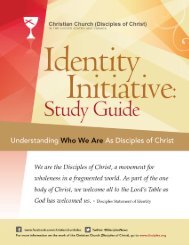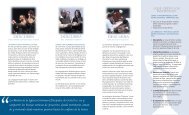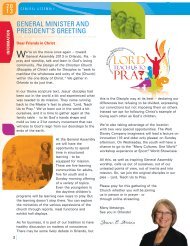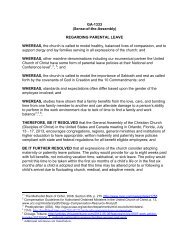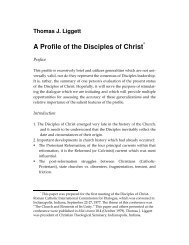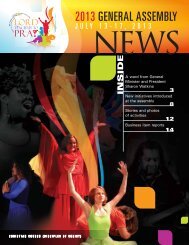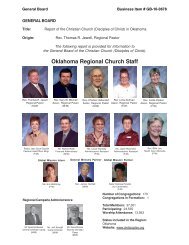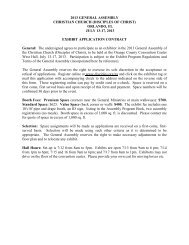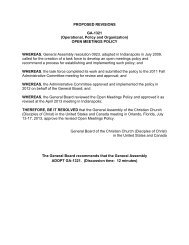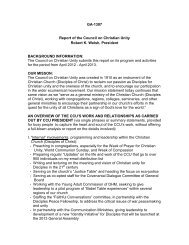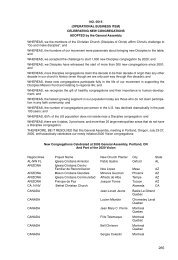RESOURCING THE CHURCH FOR ECUMENICAL MINISTRy A ...
RESOURCING THE CHURCH FOR ECUMENICAL MINISTRy A ...
RESOURCING THE CHURCH FOR ECUMENICAL MINISTRy A ...
Create successful ePaper yourself
Turn your PDF publications into a flip-book with our unique Google optimized e-Paper software.
1. Thanks to Mandy Burton, Kristel Clayville, Chris<br />
Dorsey, Anna Liv Gibbons, Laura Jennison Reed,<br />
Garry Sparks—among them four PhD and two MDiv<br />
students—and to alumna April Lewton.<br />
2. I am drawing on my forthcoming book,<br />
Vulnerability and Glory: A Theological Account (Louisville,<br />
KY: Westminster John Knox Press, [October<br />
2010]).<br />
3. Martin Luther, Against Hanswurst (1541) in Luther’s<br />
Works, ed. Helmut T. Lehmann [cited below as LW],<br />
vol. 41, Church and Ministry III, ed. Eric W. Gritsch<br />
(Philadelphia: Fortress Press, 1966), 211.<br />
4. See Martin Luther, On the Papacy in Rome, Against the<br />
Most Celebrated Romanist in Leipzig [1520], LW 39,<br />
especially 65-76. Luther quotes Colossians 3 to<br />
support his view, ”Our life is not on earth, but<br />
hidden with Christ in God” (69). Similarly, in On<br />
the Councils and the Church (1539), Luther rejected the<br />
visible accouterments of medieval holiness because<br />
they are “items of an external, bodily, transitory<br />
nature” (LW 41:147). More exactly, Luther viewed<br />
them as “purely external,” that is, merely external and<br />
as neither essential to salvation nor instituted by<br />
God.<br />
Notes<br />
33<br />
5. Moreover, Luther tended to caricature late<br />
medieval Christianity as being distorted by material<br />
excesses and to polemicize against Judaism as a<br />
religion of externals (of law and ritual versus gospel<br />
and faith); he drew a severe line between such<br />
“externals” and the inwardness of Christ’s kingdom.<br />
In addition, Luther used Judaism—perhaps even<br />
more than the papal church of his day—as his<br />
template for excoriating “externals.” In doing so, he<br />
imbibed in and exacerbated Christian anti-<br />
Jewishness.<br />
6. John Calvin, Institutes of the Christian Religion, ed.<br />
John T. McNeill and trans. Ford Lewis Battles, 2<br />
vols. (Philadelphia: Westminster Press, 1960),<br />
4.1.17.<br />
7. Eliki Bonanga, president of the Community of<br />
Disciples of Christ in the Congo (CDCC),<br />
speaking in Indianapolis, Indiana, on 7/31/09.<br />
As reported at http://www.disciplesworld.com/<br />
newsArticle.html?wsnID=15640.<br />
8. M.F.K. Fisher, “How to Cook a Wolf,” in The Art<br />
of Eating (New York: Macmillan, 1990), 350, 188.<br />
9. Calvin, Institutes, 4.17.40.<br />
Culp • Christian Unity, Prophetic Witness, and the Unity of Humanity




